Dentists Journal
Top Ten Stories of the Week
11/9/2024
All Dentists Journal · Previous Week · This Week · All Time List · Headlines

Signs You Might Need a Tooth Extraction
You might notice signs of potential tooth issues if you’ve been feeling ongoing discomfort in your mouth. Many people have dental problems at some point, so it’s important to know when to get help. In this guide, we’ll look at common signs that could mean you need a tooth extraction near you and give tips on what to do next.
What Are the Signs of Tooth Decay?
Tooth decay, or dental caries, is a widely common dental issue caused due to bacteria that produce acids that attack tooth enamel.
Tooth Sensitivity: Increased sensitivity to hot, cold, or sweet foods and beverages can indicate tooth decay. Discomfort may occur when consuming these items or when brushing your teeth.

Visible Holes or Pits: Small holes or pits may get developed on the surface of the affected tooth as decay progresses. These cavities may be visible to the naked eye or detected during a dental examination.
Toothache: Persistent or intermittent toothache, often described as throbbing or sharp pain, may indicate advanced tooth decay. The pain may worsen with pressure or when biting down on food.
Discoloration: Discoloration or dark spots on the tooth’s surface can be a sign of decay. The affected area may appear brown, black, or white, indicating demineralization and enamel breakdown.
How Can You Recognize a Tooth Infection?
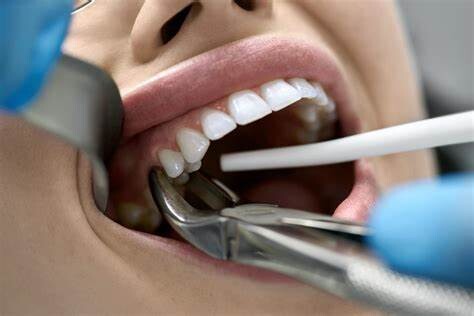
A tooth infection, also termed dental abscess, occurs when bacteria enter the tooth pulp, leading to inflammation and pus accumulation.
Severe Toothache: Intense, persistent toothache, often described as throbbing or excruciating, is a primary symptom of a tooth infection. The pain may travel to the jaw, ear, or surrounding teeth and worsen with pressure or chewing.
Swelling: Swelling of the gums, face, or jaw near the affected tooth may occur with a dental abscess. The swelling may be tender and accompanied by redness or warmth.
Fever: A fever is a systemic response to infection and may accompany a tooth abscess. If you experience fever and other symptoms of a tooth infection, seeking medical attention promptly is essential.
Pus Drainage: Drainage of pus from the impacted tooth or gums is a sign of an active infection. Pus may have a foul smell and taste and may be visible as a white or yellow discharge.
Can Gum Disease Lead to the Need for Tooth Extraction?
Gum disease, also termed periodontal disease, is a very common condition known by inflammation and infection of the gums.
Gum Recession: As gum disease progresses further, the gums may recede, hence exposing the roots of the teeth and weakening their attachment to the gums and underlying bone, increasing the risk of tooth loss.
Periodontal Abscess: Advanced gum disease may lead to the formation of periodontal abscesses pockets of pus around the tooth roots, causing severe pain and swelling, sometimes requiring tooth extraction to resolve the infection.
Bone Loss: Gum disease can result in the loss of bone tissue supporting the teeth, causing teeth to become loose and unstable, potentially leading to extraction to prevent further complications.
Chronic Inflammation: Persistent inflammation from gum disease can damage surrounding tissues, compromising the overall health of the teeth and gums, sometimes necessitating extraction to remove compromised teeth and prevent infection spread.
Is Tooth Crowding a Sign You Might Need Extraction?
Tooth crowding occurs when there isn’t enough space in the jaw for all the teeth to align correctly. This can lead to dental problems, including misalignment, bite issues, and difficulty cleaning between teeth.
Malocclusion: Crowded teeth can cause malocclusion or misalignment, affecting bite function and causing jaw discomfort.
Increased Decay Risk: Crowded teeth are harder to clean, increasing the possible risk of decay and gum disease. Extracting overcrowded teeth can improve oral hygiene and reduce the risk of cavities.
Orthodontic Treatment: In severe cases of crowding, extraction could be part of orthodontic treatment to create space for remaining teeth to align properly, improving smile appearance and function and reducing the need for invasive procedures later.
Impacted Teeth: Crowded teeth may become impacted, unable to erupt fully, causing pain, swelling, and infection, potentially requiring extraction to alleviate symptoms and prevent complications.
Are Impacted Wisdom Teeth Causing You Pain?
Impacted wisdom teeth, or third molars, may fail to fully erupt due to limited space in the jaw, leading to various symptoms, including pain, swelling, and infection.
Pain and Discomfort: Impacted wisdom teeth can result in significant pain, particularly when attempting to erupt through the gums, which may be constant or intermittent, radiating to the jaw, ear, or neighboring teeth.
Swelling and Inflammation: The gums around impacted wisdom teeth may become swollen, red, and tender, making it difficult to open the mouth fully, sometimes accompanied by a foul taste or odor.
Infection Risk: Impacted wisdom teeth are prone to infection due to bacterial accumulation below the gum line, leading to inflammation, swelling, and pus discharge.
Neighboring Tooth Damage: Impacted wisdom teeth may exert pressure on adjacent teeth, causing crowding, misalignment, and damage, potentially requiring extraction to prevent further dental issues.
How Does Trauma Affect the Need for Tooth Removal?
Mouth trauma, such as sports injuries, car accidents, or falls, can cause significant dental damage, sometimes requiring tooth extraction to address and restore oral health.
Tooth Fractures: Trauma can lead to cracked, chipped, or fractured teeth, compromising their structure and increasing infection or further damage risk, sometimes necessitating extraction.
Tooth Avulsion: Severe trauma may completely knock a tooth out of its socket, requiring immediate dental attention to attempt re-implantation. If unsuccessful, extraction may be necessary to prevent infection and maintain oral health.
Soft Tissue Injuries: Trauma can cause lacerations, abrasions, or contusions to soft tissues, including gums, lips, cheeks, or tongue, which may require surgical intervention or extraction to repair damage.
Root Damage: Trauma may cause root fractures, affecting tooth stability and increasing infection or loss risk, sometimes necessitating extraction to prevent further tissue damage and preserve oral health.
Are Chronic Dental Issues Indicative of Extraction?
Chronic dental problems, such as recurrent cavities, infections, or periodontal disease, can significantly impact oral health and quality of life, sometimes requiring emergency tooth extraction for effective resolution.
Cavity Recurrence: Chronic decay can weaken teeth, increasing fracture, infection, or loss risk, sometimes necessitating extraction if a tooth can’t be saved with filling or crown.
Persistent Infections: Chronic dental infections, like abscesses or gum disease, can spread and cause extensive damage if untreated, potentially requiring extraction to remove the infection source and preserve oral health.
Severe Gum Disease: Advanced gum disease can result in tooth loss if untreated, sometimes necessitating extraction to address infection or bone loss and prevent further complications.
Conclusion:If you’re experiencing any of the mentioned signs or have dental health concerns, contact Thumbs Up Dental – Caro for assistance. Our experienced dentist in Caro, MI, can provide a comprehensive oral health evaluation and recommend suitable treatment options, including tooth extraction. Early intervention is crucial for controlling complications and maintaining a healthy smile.
(11/02/2024)by Thumbs Up Dental
More Information: N
Views: 365
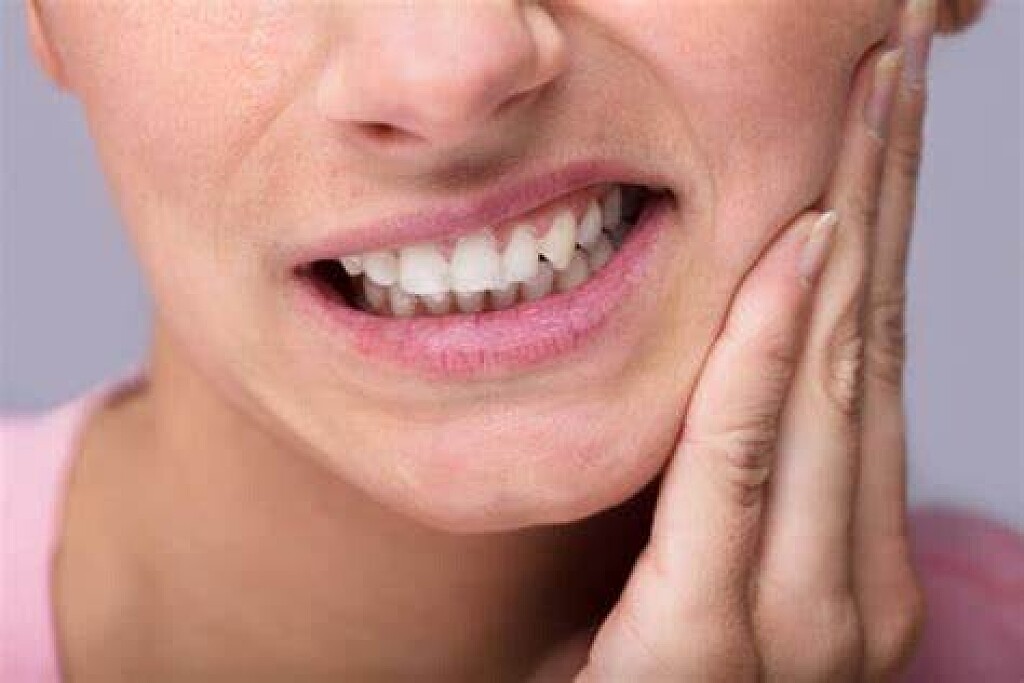
Why Does the Roof of My Mouth Hurt When I Eat?
There are some common sources to explain why the roof of the mouth hurts and causes you discomfort while you eat. It can have many possible causes, so one should not instantaneously assume the worst-case scenario. Some of the more common issues are discussed below.
Burns & Bumps
Any hot drink or extremely spicy foods can result in burns and bumps forming on the roof of your mouth. The skin on the roof of your mouth or the palate is more sensitive in comparison to that on your tongue. Hence a sore palate is more susceptible to a sore tongue.
A minor burn due to an extremely hot drink or spicy food can damage your soft palate and cause bumps, blisters, or swelling. If such is the case, then it may take about a week for the bumps to settle down. In the meantime, you can choose to eat soft and light foods and drink cool or chilled drinks so that your palate can heal without any further damage.

Canker Sores
Canker sores tend to form on the inside of the cheek and are round and very sensitive, at times though they may also end up forming on the roof of your mouth. They can be caused due to several issues related to the immune system. They may start to develop due to stress, hormonal imbalances, or consuming certain types of foods.
They usually tend to be sore for about a week and go away within two weeks. In the meantime, while they heal, you can consume bland foods to avoid irritating the canker sores. If they extend two weeks, you should pay a visit to the doctor, and your dentist could prescribe a pain-relieving gel to be applied to your sores.
Bump on Roof of Mouth Sinus Infection

Bacterial infections such as common cold, tonsillitis, streptococcal sore throat, sinusitis, and other types of such infections can result in the palate to be sore. The pain may be due to bacteria growth irritating your palate or the sinus pressure pushing on the palate of your mouth. Some fungal infections can also cause pain and redness of the palate.
Causes of Roof of Mouth Bump
The bump on the roof of the mouth can be caused due to multiple varying reasons. Some of the causes are:
Injury
Burns
Hyperdontia
Oral Cancer
Torus Platinus
Cold Sores
Cold sores generally tend to form on the lips but can also find its way to the roof of your mouth. When they form on the roof of your mouth, they can be extremely painful as fluid-filled blisters may also develop. They can be caused due to a virus knows as ‘herpes simplex virus.’
The fluid-filled blisters start to become crusty within four days and start to heal after 8-10 days. You should avoid touching them no matter how sore they become, as that increases the time of the healing process. Cold sores do have the chance of coming back again, so a visit to the doctor may be required to get a long-term medication to get rid of them completely.
Variety of Other Symptoms of Pain in Roof Of Mouth
When you are facing pain in roof of the mouth ,you may experience following symptoms:
Itching
Fever
Blistering
Cough
Sore Throat
Runny Nose
Dental Issues
In some cases, when you have recently gotten done with dental treatment, the after effects may include pain around the treated area along with an infection. The infection can then reach the soft tissues on your palate, especially if the treated area includes the top teeth.
In such a case, visiting a doctor is the best option to get rid of the infection and get the proper medication to get rid of the pain.
Oral/Mouth Cancer
Generally, having a mouth sore is harmless and tends to heal on its own. Whereas, in some cases having the constant roof of mouth sores can be a symptom of oral/mouth cancer. It can be treated if found at an early stage. You should visit your dentist if your mouth sore does not heal by itself within two weeks. If your dentist suspects that the mouth sore might be cancerous, you will be sent to an oral surgeon to get an oral evaluation and perform a biopsy of the tissue.
Mouth Cancer can be developed on any part the mouth including:
Gums
Tongue
Roof of Mouth
Floor of Mouth
Lips
If cancer is found, the treatment can start instantly. The treatment may require surgically removing the cancerous sore and after that, getting chemotherapy or radiation to be making sure that other cells are not affected.
Have Some Questions About Roof Of Mouth Sore? Here Is Everything You Need To Know
Why the roof of mouth hurts when I eat after not eating for a while?
Sometimes this feeling is common and if your mouth aches for a couple of seconds or a few more maybe it’s just the salivary gland trying to produce more saliva all of a sudden. Since you haven’t eaten in a long time, your mouth reacts to the surge.
However, if the pain becomes frequent, you need to get it checked immediately as it can be due to buns, acute or chronic infections, dental issues, cold sores, or canker sores. It may also be due to mouth cancers. And in any such case, it is better to get inspected before your condition worsens.
What is incisive papilla and how to get it removed?
It is the projection of the mucous tissue that appears between the upper teeth, two of them. A swollen papilla hurts a lot and is caused due to many factors. Oral hygiene has, however, nothing to do with it. It mostly occurs due to human impact, including consuming food that is sharp or biting the papilla.
Food that is hot or too spicy can also result in the incisive papilla. It can be treated quickly by thorough cleaning of the mouth or utilization of floss in the spaces. Brushing twice in a day and good oral hygiene helps it heal faster.
How to check if I have bumps on the roof of the mouth?
Checking for bumps on the roof of the mouth is an easy task. Most of the time, your mouth lets you know that it’s in trouble. You start to feel something extra in your mouth as your palate has become swollen. It gets hard to eat and drink the stuff without the pain and soon it starts irritating you. Or , you may experience erythema and spots in the mouth.
What is a hard bump on the roof of the mouth?
Bumps can be caused due to problems like canker sores; colored sores that appear on the roof of your mouth. Cold sores, infections, etc. however, torus palatinus is the most common cause and the hard palate is affected in this case. If your bump has not healed after two weeks, you need to see a doctor.
Home remedy to cure lump on the roof of the mouth
Lumps or bumps on the palate are not troublesome in the early days and can be treated at home. Several home remedies to get rid of such problems are:
Drinking as much cold water as you can; it helps get rid of mouth burns. You can also retain the cold water in your mouth for 5-10 minutes sequentially.
Another good option is to consume yogurt or milk (not hot), its proteins help as a barrier and coats your skin.
Utilization of aloe Vera gel is also practiced around the world as it is considered as a natural healing aid.
How to Cure if the Roof of my Mouth Hurts when I Eat Bread?
Eating bread or any other soft item may hurt if your mouth is going through an oral or dental problem including burns, bumps, sores, and infections. If it’s not serious you can cure the pain at home by using honey, milk, or keeping yourself hydrated. It checks your electrolyte imbalance and helps in quick healing. However, if the imbalance is severe, you need to see a doctor.
If your bumps or infections are caused due to trauma cold water can help, but painful blisters demand medical help. You may be advised to use medicated mouthwashes, soft toothbrushes, or other pastes.
Why does the Roof of Mouth Hurt when Swallowing?
Mouth roof, also known as palate may hurt or get sore when you try to swallow things if it’s injured. Damage can be of many forms. For instance, you may have developed a bump or burn due to hot or spicy food. As the palate, soft or hard, is much more sensitive than the tongue, a small burn can lead to a severe bump and become troublesome.
Apart from that, immune deficiencies may lead to the formation of canker sores right inside your cheek area and when it travels to the mouth, you feel pain when swallowing stuff. Dental problems can also lead to sore mouths.
How to Get Rid of Blisters on the Roof of the Mouth Due to Eating?
Mouth sores are irritating and really painful. They are caused by many related and unrelated mouth problems. Whatsoever, once a blister is formed inside your mouth or on the lips, it becomes really difficult to eat or drink something. But with patience and care, it can be treated. If you are unaware of the reason you should try avoiding hot, salty, crispy, and vitamin C food.
Also, items with high sugar content, tobacco, or alcohol should not be consumed. These foods can be acidic and are bad for your oral health. Along with precautionary treatments, you need to apply mouth ointment, gargle with salty water, and should not touch the blisters.
What is the Difference in Lump and Roof of Mouth Sore?
Lumps or mucous cysts occur on the lips or inside the mouth. It occurs when your salivary glands have excessive mucous. The problem is not so painful and is relatively harmless if treated early as compared to mouth sores. The latter results from canker sores, bumps, infections, or other reasons and mainly affect the palate area. Lumps, however, can occur everywhere.
Also, lumps formed on the roof of the mouth may lead to the roof becoming sore. Both can be managed if caught early and can be quite painful if the situations worsen or prolongs. Cysts can become permanent and cancerous if are not handled with care.
Is Blister and Roof of Mouth Burn the Same?
Essentially, they are not the same however are caused due to similar reasons. Mouth burns are usually internal and affect the palates. On the contrary, blisters mostly affect the area inside of the lips but can appear on the outside. As discussed, the set of causes is almost the same for both problems, and, hence, the treatments also converge.
You may avoid eating salty, hot, or edgy food. Also, stay away from food that is rich in vitamin C, sugar, etc. Ointments and mouth gels can help you get rid of both the problems but blisters are more damaging and irritating than the burns. The burned roof of the mouth can be healed fast by different cures.
What Causes Swelling in the Roof of the Mouth?
The swollen palate may result from one of the stated reasons. Cold sores or canker that appear on the gums, lips, and other areas may lead to blistering and swelling of the palate. Many people suffer this fate after eating pointy food that may hurt the soft palate, hot or spicy food resulting in a burn, or through a hard item.
Another common reason is dehydration that leads to electrolyte imbalance in the mouth. It leads to swelling and is usually one of the first indications of dehydration. Lumps, viral infections, or cysts are some of the extreme underlying problems. In any of these cases, you must receive proper medical care.
How do you stop the roof of your mouth from hurting?
Pain in the roof of the mouth can be unbearable and everyone wants some kind of immediate relief from that pain. If you are at home and you face such issue then the best thing you can do for an instance is that you can suck something cold or you can use warm water and rinse. This would make a lot of difference.
(11/03/2024)by Cards Dental
More Information: N
Views: 447
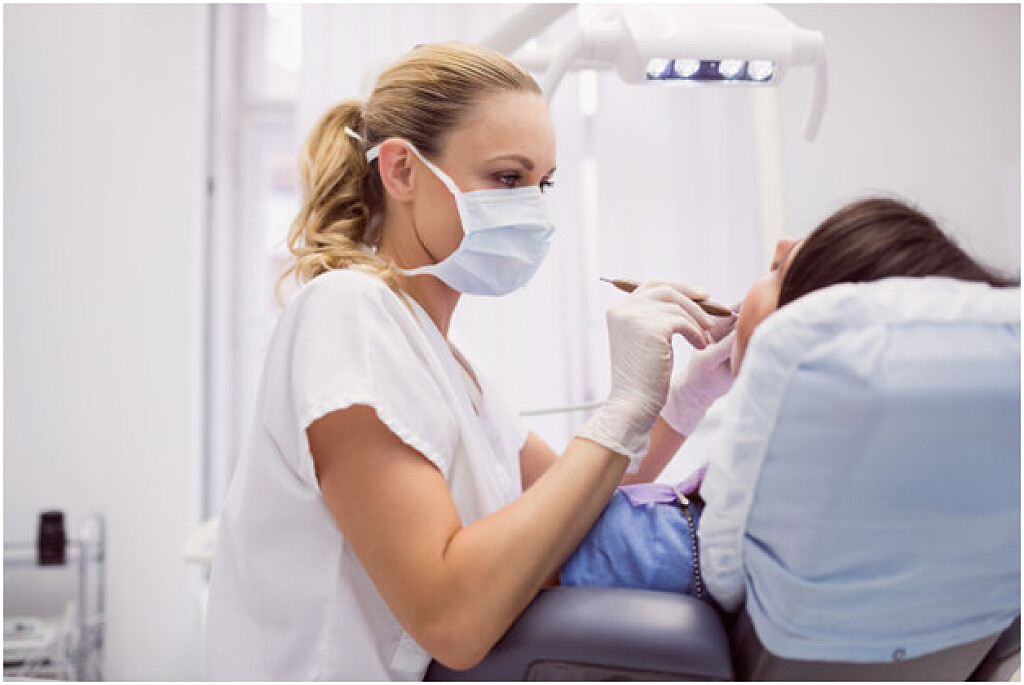
What To Do If You Have A Broken Tooth
One of the more serious emergency dental services is broken tooth repair. At Oakville Place Dental Office we regularly handle these kinds of emergencies. So, to answer the question, “What do you do if you have a broken tooth?” Do not procrastinate. Seek the care of a dental professional as soon as possible.
Breaking a tooth can be quite scary, especially if it is right in the front where it can be readily seen. There are some things you can do until you are able to see a dentist.
Then your dental professional has several procedures available for fixing a broken tooth.
Broken Tooth Repair At Home
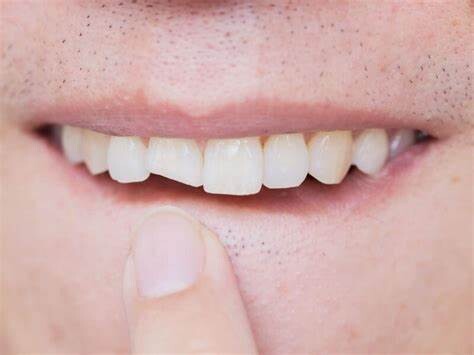
Until you are able to see a dentist try these at-home remedies to relieve pain and reduce any swelling.
If you are in pain from a serious break you can take over-the-counter anti-inflammatory pain medications or a prescription from your dentist.
Rinse your mouth with warm water.
Use an ice pack on the outside area of the cheek or lip where the tooth is broken. This should help with pain and reduce swelling.
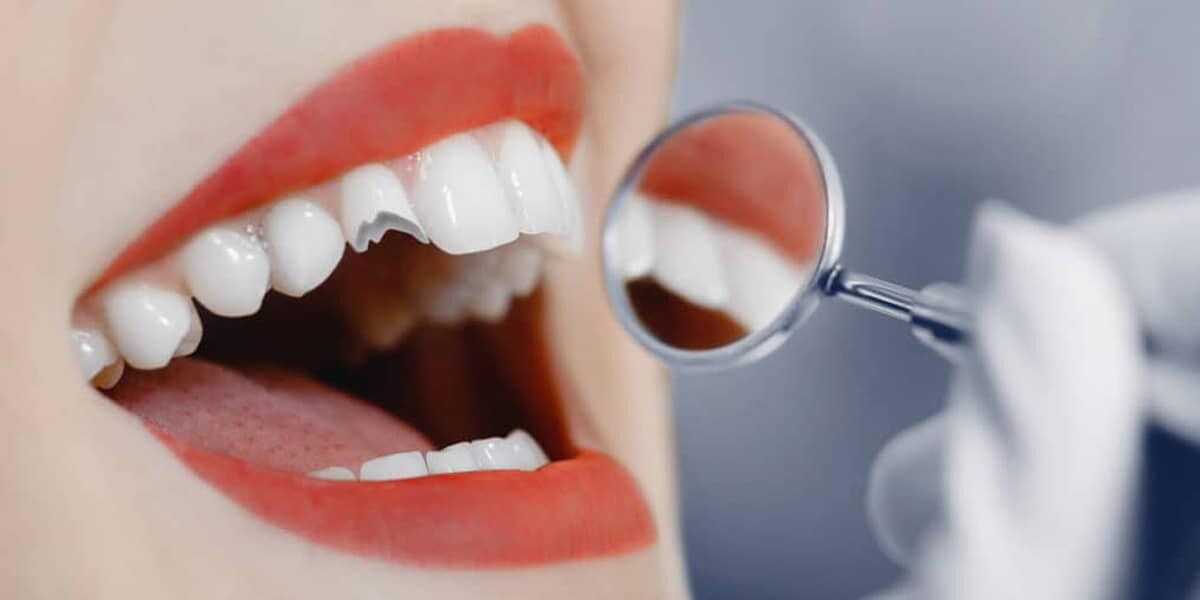
Should the area bleed, use clean gauze and apply pressure until the bleeding stops.
If the broken tooth has a sharp edge that could cut the inside of your mouth or tongue, cover it with some sugar-free gum until you can see your dentist.
Professional Dental Options For Broken Tooth Repair
The dental specialists at Oakville Place Dental Office are able to use restorative and cosmetic procedures to fix a broken tooth.
If your tooth was broken due to an automobile accident, a fall, some other facial trauma, or just biting down on something hard, we can solve the problem. The sooner you come in for an appointment, the more likely we can treat it with little residual complications.
If the inner structure of the tooth, known as the pulp, is damaged, timing is crucial. Waiting to see a dentist may be the difference between a simple restoration and a more costly procedure. That’s why emergency care should be a priority.
Depending on how badly your tooth is damaged, our dental professionals can choose from a number of remedies.
Tooth bonding, veneers, root canals and dental implants plus crowns and bridges are all ways Oakville Place Dental Office can remedy and restore your broken tooth.
Don’t wait if you have suffered a broken tooth.
Avoid infection or more serious repairs
(11/01/2024)by Oakville Dental Clinic
More Information: https://www.dentistoakville.com/blog/what-to-do-if-you-have-a-broken-tooth/
Views: 306

Do You Need Dental Bonding?
Dental bonding is a simple procedure that uses a tooth-colored resin material to cover chipped, cracked or even discoloured teeth. While treatments like veneers and teeth whitening are more comprehensive, dental bonding can still make a big difference in the overall look and feel of your smile! Here’s why you should consider this treatment:
Instant results
Your dental bonding can be completed in just one treatment. In fact, if you come in for an emergency treatment of a chipped tooth, your dental bonding can, at times, be completed on the same day itself since very little time is required for it.
Affordable

Dental bonding is one of the most affordable cosmetic treatments offered. If you’re planning out a smile makeover, but with a budget, this is a good treatment to consider so don’t forget to check with your dentist if dental bonding may be appropriate.
No numbing
Bonding is applied to the surface of your tooth to mask any minor issues. There’s no significant reshaping or drilling involved for this treatment. Therefore, no numbing will be required since dental bonding is minimally invasive in nature.
Complete makeover
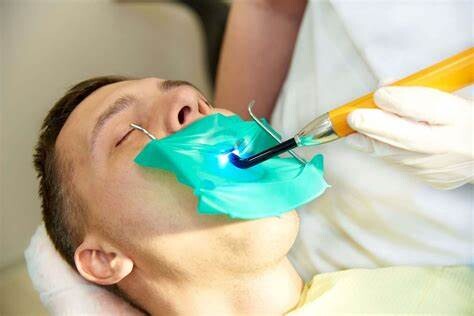
As we mentioned before, when planning a smile makeover dental bonding should be one of your top choices to consider. While it may just be used to mask a single chipped tooth or gap, this can affect the overall appearance of your smile.
Considering dental bonding and want more information? Call Studfield Dental Group today and we’ll be happy to have you in for a consultation!
(11/01/2024)by Studfield Dental Group
More Information: https://sdgdental.com.au/blog/do-you-need-dental-bonding/
Views: 403

Should You Be Concerned About Having Boils or Abscesses in Your Mouth?
Are boils and abscesses in the mouth a cause for concern? Many people may not be familiar with these terms, but it’s important to understand them if you have any kind of discomfort in your mouth. Boils and abscesses are two different types of infections that can occur in your gums or other parts of your mouth. This can lead to pain and discomfort, so it’s important to understand the difference between them and when to seek medical attention.
Should You Worry About Gum Boils or Gum Abscesses?
The short answer is yes; you should be concerned about gum boils or abscesses. A boil is a collection of pus that forms when an area of the gums becomes infected by bacteria. Boils often form in areas where there are pockets of pus, such as food getting stuck in between teeth or on the gums. They can be very painful and lead to swelling and redness in the area.
On the other hand, an abscess is a pocket of pus that forms when bacteria are unable to escape from an infected area. The infection can spread to other parts of the mouth and cause more serious health problems. This can include pain, swelling, and even fever. If left untreated, these infections can result in tooth loss or other complications. Apart from this, knowing how to tell if you have gingivitis or periodontitis can also help to determine the severity of your gum infection.
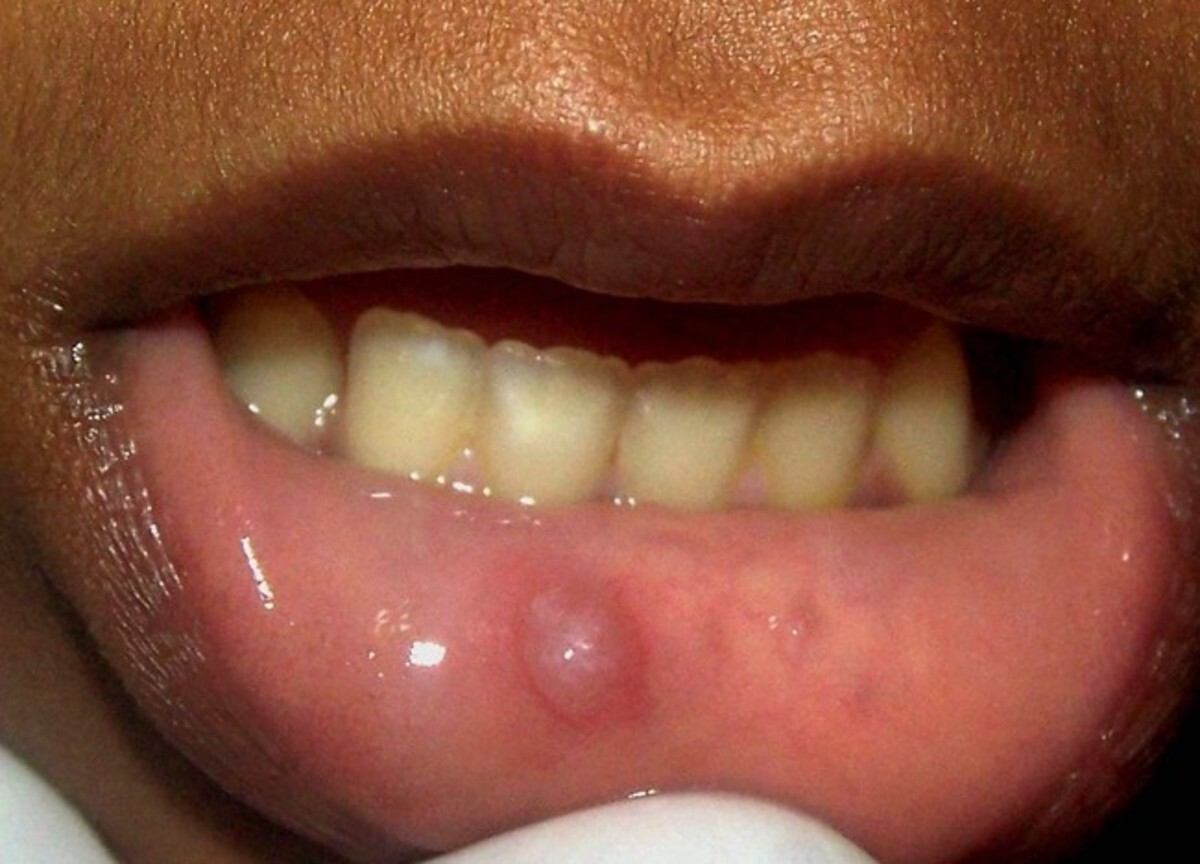
What Can You Do to Prevent Boils and Abscesses?
Although boils and abscesses can be very uncomfortable, there are steps you can take to prevent them from occurring. Good oral hygiene is key; make sure to brush twice daily with fluoride toothpaste, floss regularly, and use an antiseptic mouthwash. It’s also important to eat a balanced diet and avoid consuming sugary snacks or beverages. Eating healthy foods with lots of fiber and vitamins can help strengthen the immune system and keep your gums healthy.
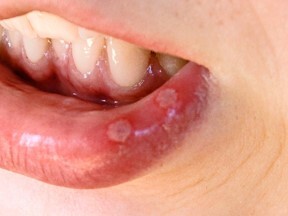
In addition, quit smoking if you can; this will help reduce your risk for gum disease, which is an underlying cause of many boils and abscesses in the mouth. In some cases, antibiotics may be necessary to fight off the infection. This is why it’s important to see a professional for gum disease in Calgary as soon as possible; the earlier you catch an infection, the easier it will be to treat. This will help you avoid any more serious complications down the line.
Summary
Gum boils and abscesses can be very uncomfortable and should not be ignored. With proper oral care and prompt medical attention, you can get rid of the infection quickly and prevent any further complications. If you have any questions or concerns about gum boils or abscesses, talk to your dentist today. They will be able to provide expert advice on how to keep your mouth healthy and free of infection.
(11/04/2024)by Medium
More Information: https://medium.com/@DrBrentMacDonald/should-you-be-concerned-about-having-boils-or-abscesses-in-your-mouth-8470da9970b8
Views: 342

Swollen Gums: Possible Causes And Treatments
Gingivitis can have various reasons, which in most cases are caused by a lack of oral and dental hygiene.
Gingivitis is often caused by inflammation of the gums and other factors such as nutrient deficiencies, hormonal changes, or infection. According to the cause of gingivitis, there are different treatment methods for it.
Proper oral and dental hygiene can prevent gingivitis.Swollen gums are usually red, tender, or painful. In this situation, your gums may bleed easily when you brush your teeth. If you have swollen gums, you should see a dentist.
Symptoms of Gingivitis
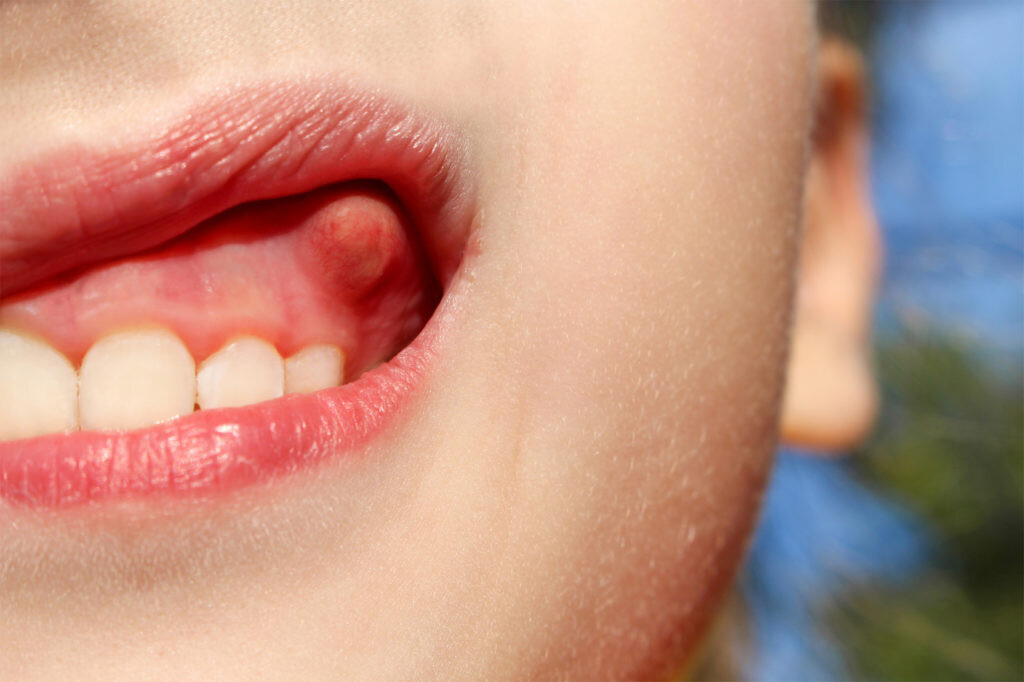
Normally, the gums should be pink and fit well around the teeth. But in some cases, the gums may go out of their normal state. Gingivitis usually causes the following changes along the gum line:
Gum puffing
The gum colour changed to dark red
Unexplained gum bleeding
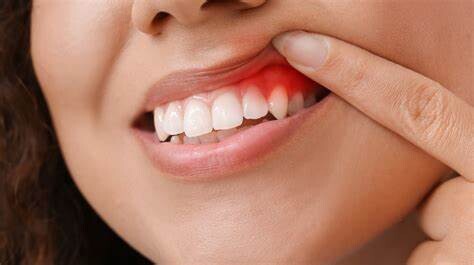
Bad Breath
Receded or sensitive gums
Home Remedies for Gingivitis
The best home remedies to reduce gingivitis are:
A mixture of water and salt
Rinsing the mouth with water and salt can help oral hygiene. This mixture acts as an antibacterial solution and destroys the bacteria inside the mouth. It may also help reduce swelling.
Hot and cold compresses
Hot and cold compresses can reduce the pain and swelling of the gums. Alternating the use of hot and cold compresses is an effective method.
Turmeric gel
Turmeric gel contains curcumin, which has antioxidant and anti-inflammatory properties. Turmeric gel can prevent plaque and gum inflammation. Gingivitis is one of the common causes of gum swelling.
Red, painful or swollen gums should be thoroughly rinsed with water and a 3% hydrogen peroxide solution.
Gingivitis
Various factors cause swelling and inflammation of the gums, including:
Gingivitis or periodontitis
Gingivitis is the most common cause of swollen gums. If plaque is formed on the gum line and teeth, it can turn into a mass over time and may lead to gingivitis. If gingivitis is not treated, it turns into a more serious infection called periodontal disease.
Also, food particles and plaque may get stuck under the gum line and cause infection or inflammation of the gums.
Pregnancy
Pregnancy can cause significant changes in hormone levels. These changes may increase blood flow in the gums and cause swelling of the gums. Hormonal changes can also reduce the body’s ability to fight bacteria that cause gingivitis.
Infection
Oral infections caused by fungi and viruses can cause swelling of the gums. Complications of infected teeth such as tooth abscesses may also lead to gingivitis.
Brushing and flossing with high pressure
Extra pressure does not make teeth and gums cleaner but only causes gum pain. Use soft, circular motions when brushing. When flossing, gently slide the floss up and down each tooth.
ther possible causes
Gingivitis can have other causes. Including:
Side effects caused by taking some drugs
Malnutrition
Allergies to food products, such as ingredients in toothpaste or mouthwash
Using improper dental floss, dental veneers, or other improper dental appliances
In all cases, the dentist diagnoses the cause of gingivitis by examining the patient’s symptoms and medical history.
Treatment of Gingivitis
If you have gingivitis, you should see a dentist immediately. Use a toothbrush, dental floss and mouthwash. In most cases, gingivitis can be resolved with these measures, otherwise, you should visit a dentist.
The gingivitis treatment plan after visiting the dentist probably includes the following:
Full mouth radiograph
A blood test to check the deficiency of certain substances or the presence of an infection
Prescribing mouthwash or antibiotics
In most cases, these measures are enough to diagnose the cause of swelling and treat it. But in some cases, when gum inflammation is severe, surgery may be required.
Gum surgery is not very invasive. The dentist removes all the gingivitis and the masses in the depth of the gum.
Pain relievers such as acetaminophen (Tylenol) and ibuprofen (Advil) can help reduce oral discomfort. Usually, the use of over-the-counter pain relievers along with gargling with salt and water solution helps to improve the patient’s condition to a great extent.
However, you should be careful that taking painkillers and home remedies is usually a temporary solution to reduce pain and you should see a dentist as soon as possible.
Prevent Gum Swelling
Preventative measures are very important to prevent pain and inflammation of the gums in the long term.
Maintain good oral hygiene
Brush and floss every day. Maintaining oral and dental hygiene prevents gum swelling.
Use a mild toothpaste
To avoid gum irritation, you should choose a toothpaste that suits your condition. You can talk to your dentist about this.
Use mouthwash
Mouthwash containing alcohol can increase inflammation. But non-alcoholic mouthwashes can eliminate bacteria in the mouth and improve your oral hygiene.
Visit the dentist regularly
If you visit the dentist regularly for examination, you can prevent gingivitis. The doctor can study the problems ahead and advise you on preventive measures.
Quit smoking
To avoid further irritation of the gums, it is better to quit smoking. This will not only help your oral health but also your heart, lungs and skin.
Have a balanced diet
Avoid consuming too much sugar and make sure your diet contains the nutrients you need to maintain healthy teeth and gums. A balanced and healthy diet helps maintain the health of the body, including the mouth.
General points
In some cases, gingivitis is caused by an underlying disease, so if it does not go away on its own after a short period of time with the help of home remedies, you should see a dentist.
Gingivitis looks scary and may be painful and uncomfortable, but it is a treatable condition. The type of treatment depends on the severity of the disease. Treatment methods may vary from gargling with a mixture of water and salt to the use of antibiotics or, in some severe cases, surgery.
In any case, to prevent this problem in the first place, you should pay attention to your oral and dental hygiene. But do not worry if you have gingivitis, because it is a treatable problem.
Frequently asked questions
What Should Be Done for Gingivitis?
Immediate treatment of gingivitis:
Gently floss and brush to clean the affected area.
Rinse your mouth with a mixture of water and salt to kill bacteria.
Use a warm compress to reduce gum pain.
Use a cold compress to reduce gum swelling.
Drink plenty of water to stimulate saliva secretion.
If these treatments do not help to improve your condition, see a dentist as soon as possible.
How Many Days Does Gingivitis Heal?
Gingivitis is a common problem and in most cases, it is nothing to worry about. But if gingivitis lasts more than 2 days, it may be caused by an underlying problem such as gingivitis, periodontitis, or tooth abscess.
What Makes Gingivitis Worse?
Avoid alcohol and tobacco because these products can irritate the gums and increase swelling.
What Causes Gum Swelling?
The longer the plaques remain on the teeth, the more they cause irritation and inflammation of the gums. Over time, the gums swell and bleed easily. This condition may also cause tooth decay.
Can Stress Cause Gingivitis?
Research has proven that long-term stress weakens the immune system. This condition reduces the body’s ability to fight infections. As a result, the risk of developing problems such as bleeding and gum inflammation increases.
Does Gingivitis Heal by Itself?
Gum pain is usually a sign of a bigger problem, and if it doesn’t last more than a few days, it could be due to hormonal changes or a simple pest.
Why Do The Gums Around The Teeth Swell?
When the gum around the tooth becomes swollen, it usually indicates an infection. This condition is called tooth abscess, which can be very painful. If left untreated, the infection may spread and cause more serious problems.
(11/04/2024)by Silverhill Dental
More Information: https://silverhilldental.com/swollen-gums-possible-causes-and-treatments/
Views: 331
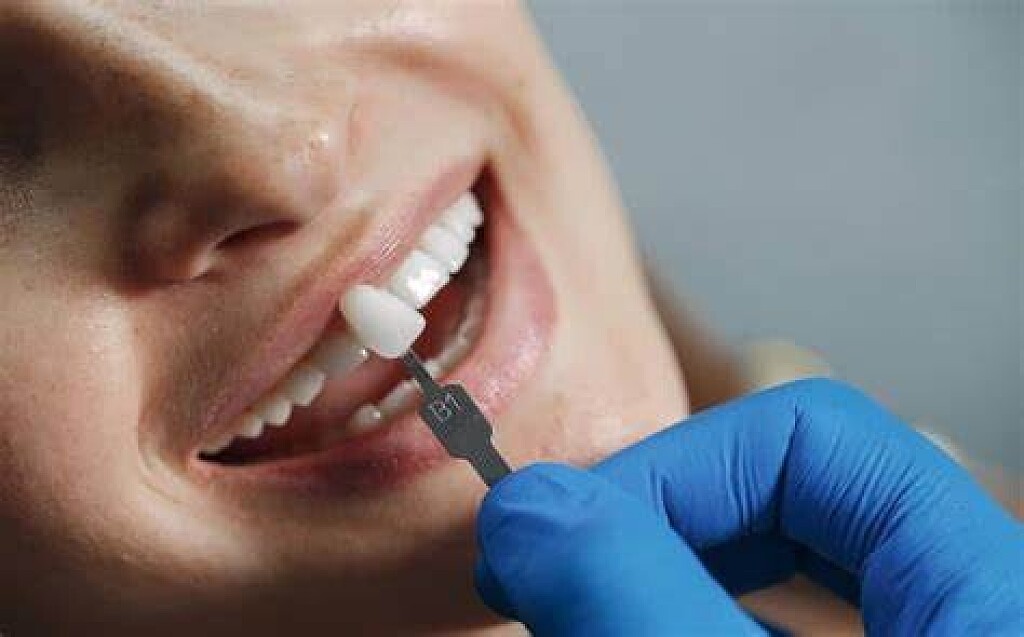
Five Options for Your Missing Teeth!
Teeth are important. A healthy set of teeth will not only help you have a great smile, but will also help keep your overall health in good shape.
The absence of one or more teeth can make common tasks such as chewing and speaking much more difficult.
The National Health and Nutrition Examination Survey (NHANES) reports that 92 percent of adults aged 20-64 years suffer from dental caries. Likewise, the number of individuals who have missing teeth is quite high. Fortunately, with today’s advances in dental space, there are a number of solutions.
OPTIONS ARE AVAILABLE FOR THOSE WITH MISSING TEETH

1.- Dental Implant
A dental implant is a surgical procedure in which a replacement tooth root is placed and fused with the jawbone.
While dental implants work well when replacing a single tooth, they may not be the best option for replacing multiple teeth. However, dental implants provide the look and feel of natural teeth.
However, it is not right for everyone, as a dental implant requires surgery and often costs more than bridges or dentures.
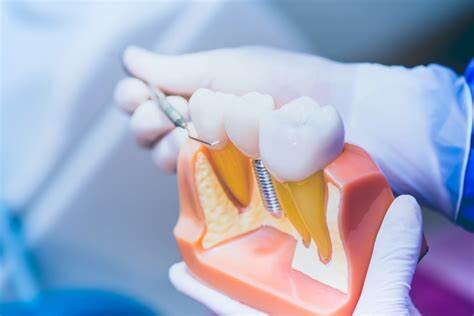
2.- Fixed Bridge
Quite simply, a fixed bridge bridges the gap between one or more missing teeth.
The process of installing a fixed bridge usually involves multiple visits to the dentist, as the process of placing the implant, customizing the bridge, and replacing the missing teeth with the bridge takes time.
However, once the bridge is in place, a fixed dental bridge looks, feels and functions like natural teeth, does not need to be removed for cleaning, and is typically much more cost-effective than a dental implant.
3.- Resin Bonded Bridge
A resin bridge is generally much less invasive than a fixed bridge.
While a fixed bridge is best for teeth that are relied upon for chewing, a resin bridge can be a good alternative for missing front teeth that typically don’t withstand much pressure.
A resin-retaining bridge is attached to adjacent teeth on both sides. Although they are known to be less durable than a fixed bridge, they also tend to be much cheaper.
4.- Removable Partial Prosthesis
A removable partial denture consists of replacement teeth for a small portion of missing teeth and functions normally.
While removable partial dentures are great for chewing and aesthetic appeal, they are much less durable than a dental implant or bridge and can be uncomfortable when worn for long periods of time.
However, they are typically the least expensive thread replacement option available and are easy to repair once any damage occurs.
5.- Removable Full Prosthesis
Depending on how many teeth you currently have, removable full dentures can be quite invasive and require multiple visits to the dentist.
Unlike removable partial dentures, where only some of the missing teeth are replaced, a removable full denture is used to replace most, if not all, teeth.
While a removable full denture is both aesthetic and functional, it can be uncomfortable and should not be worn 24 hours a day.
Consult your dentist to find the best option for you
If you are looking for a way to replace missing teeth, consult your dentist before making your final decision.
All five options offered are reliable and work well to replace missing teeth, but discussing the options with a professional is the only way to ensure you get the specific treatment you need.
(11/05/2024)by Dent Suadiye
More Information: https://www.dentsuadiye.com/en/5-options-for-your-missing-teeth/
Views: 297
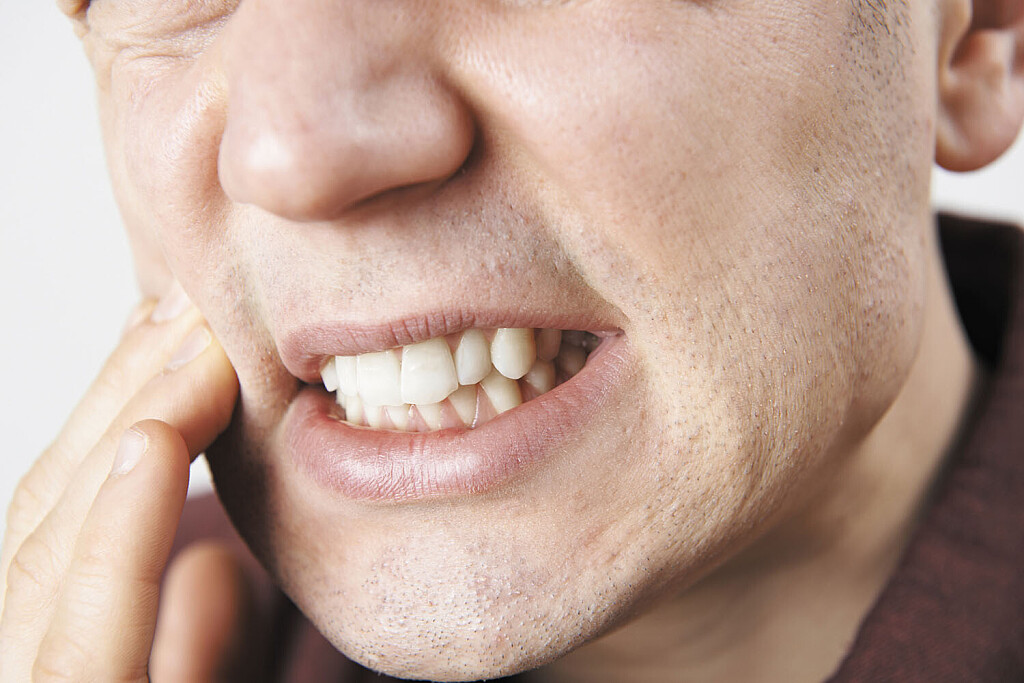
Common Causes Of Pain In Your Jaw
aw pain is one of the worst pains to experience because the jaw is used for many activities like eating and talking. It can also be challenging to narrow down the exact causes of severe jaw pain. But what are the reasons for jaw pain?
Most jaw pain is caused by either TMJ, teeth grinding, or headaches, all of which cause inflammation in the jaw. But if you play sports, trauma to your jaw can also cause jaw pain. No matter the reason for your jaw pain, you can try many over-the-counter treatments at home.
It can be difficult to know when to stop the at-home treatments and to seek medical help. So let’s look at some common causes of jaw pain so that you know when it’s time to call your dentist.
What Can Lead to Jaw Pain?

Jaw pain can be tricky to figure out as there isn’t one single cause. You may quickly reach for the Oragel (on Amazon), but you’ll still want to address the root cause. In most cases, you are likely experiencing jaw pain because you have damaged or injured your jaw muscle.
But there are cases where jaw pain is caused by more serious things, such as TMJ, severe headaches, or even simply grinding your teeth too much. To narrow down the cause of your jaw pain, you must evaluate your symptoms carefully.
If your symptoms are severe or don’t match with any of the suggested reasons for jaw pain, you may want to consider seeking the help of a dentist to find out why your jaw is hurting.
Poor Dental Hygiene

Jaw pain can be caused by a cavity that has reached the root of a tooth and by an abscess or gum disease. It can also be caused when teeth are too crowded or when you are getting new teeth like wisdom teeth.
The best way to know if poor dental hygiene is the cause of your jaw pain is to see a dentist. They will be able to look at your teeth and tell you whether they are healthy.
To avoid jaw pain caused by poor dental hygiene, brush your teeth twice daily, floss once a day, and rinse using mouthwash.
Symptoms of TMJ
Temporomandibular joint disorder, abbreviated TMJ, is a medical condition affecting the joints in your jaw bone. It is a common medical condition and is most common among women.
TMJ is typically caused by an improperly healed jaw injury or excessive grinding and clenching of the teeth. But sometimes, it can also be caused by your bite not lining up correctly or an illness like arthritis.
There are several symptoms of TMJ, and they include the following:
Jaw pain
Headaches
Ringing in the Ears
Dizziness
Clicking sound when opening and closing the mouth
Difficulty or pain while chewing
The locking of the jaw
If you have three or more of these symptoms, then you likely have TMJ. It’s essential to seek medical help to learn how to manage your TMJ, as stress can further aggravate the disease.
Stress and Migraines
When stressed, you are more likely to clench your teeth, leading to jaw pain.
Many people get headaches or migraines from stress as well. Even if you get another type of migraine, such as one caused by hormones, depending on where the migraine is in your head can cause the pain to spread to your jaw.
If you are experiencing migraines along with jaw pain, it is vital to seek medical care to discover the cause of your migraines before you work to treat the jaw pain.
Teeth Grinding
Teeth grinding or chewing constantly can cause trauma to your jaw, leading to jaw pain. In addition, both of these activities can also damage your jaw.
Many people grind or clench their teeth when stressed, which is why working to mitigate stress in your life is essential. People who constantly chew are usually those who enjoy chewing gum.
While it can be difficult to stop chewing gum or clenching your teeth, it may be your only way to relieve jaw pain. Dentists often have tips and tricks to help you stop either of these habits.
Pain from Jaw Injuries
If you frequently play sports and are experiencing jaw pain, it could be the culprit. For example, during contact sports, you may get hit in the face by a ball or impact your jaw when you are tackled with a helmet on.
Either of these cases can lead to jaw pain. Typically, jaw injuries will clear up on their own, but occasionally they can become more severe and turn into TMJ. Therefore, any jaw pain that you suspect is caused by an injury but doesn’t go away on its own within a few days should be looked at by a medical professional.
Remedies for Alleviating Jaw Pain
The good news is that no matter which of the above ailments is causing your jaw pain, you can use many at-home remedies to minimize the symptoms.
Hot/Cold Packs
An ice pack is the first thing you should reach for when you have jaw pain. An ice pack can help lower inflammation and reduce pain. It can also help you feel better if you are suffering from a migraine or stress.
Apply the hot or cold pack to your face for 10 minutes, then take a 10-minute break before re-applying for ten more minutes. You can repeat this process several times.
Pain Relievers
You can take over-the-counter pain relievers like ibuprofen and acetaminophen to help stop jaw pain. This may be especially helpful when you have a jaw injury or a headache.
Don’t overuse these pain relievers, however; if you find that you need more and more of them to do an everyday task like eating, then it is time to see a dentist or doctor.
Massage Your Jaw and Neck
Some jaw pain can be caused by muscle tension, mainly in cases of stress or stress headaches. If you think your jaw pain might be from stress, a simple massage can help.
Using just two fingers, gently press the corner of your jaw near your ears. You can rub it in a circular motion for a few minutes. You can also massage your neck using the same method.
Final Thoughts on Causes of Pain in Your Jaw
Overall, jaw pain is annoying, especially when it gets in the way of mealtime. But before you jump to conclusions, evaluate your symptoms to see what you think is causing your jaw pain.
If you think you may have injured your jaw or suffer frequent headaches, there is much you can do at home to treat your jaw pain. But if your pain is caused by something more serious, ensure you seek professional help.
(11/05/2024)by Cavities Get Around
More Information: https://cavitiesgetaround.com/common-causes-of-pain-jaw/
Views: 286
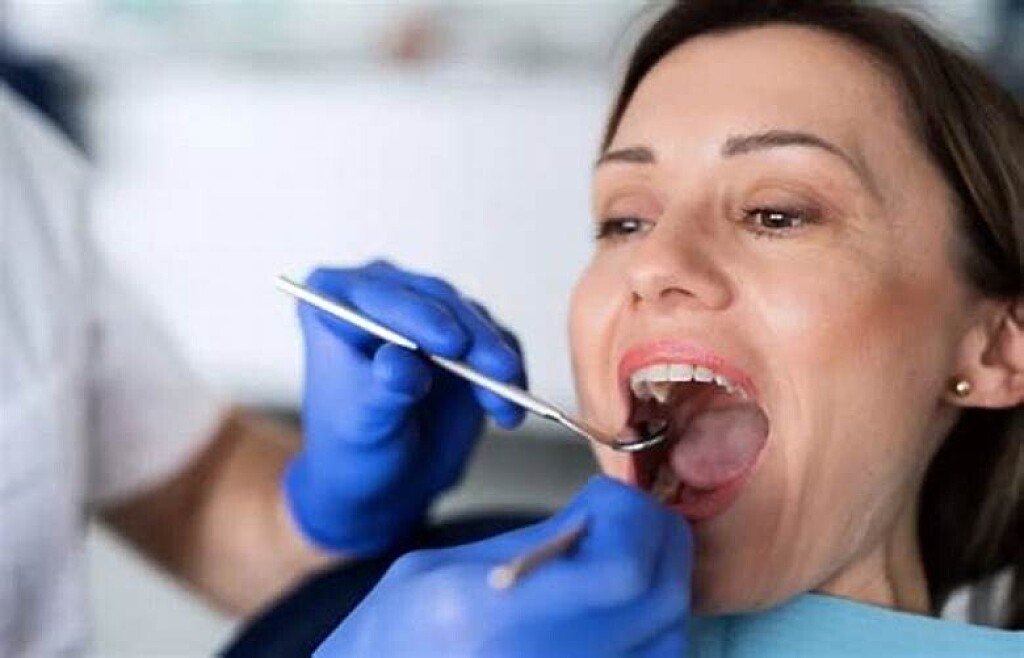
Tooth Abscesses vs Tooth Infections: What is the Difference?
When teeth are healthy, strong and free from infection, they feel so comfortable that you are not aware of them. It is a very different story when a tooth becomes infected, and the pain of a tooth infection can be considerable. A dental abscess can feel even worse, but we find patients are frequently confused by the differences between these conditions.
What is a Tooth Infection?
Your mouth is home to hundreds of species of bacteria, many of which are benign, but some are harmful and can cause infection. Usually, your teeth have a hard outer coating of enamel that protects them and prevents bacteria from entering the tooth. You can have an infected tooth if you have a very deep cavity that isn’t treated, have gum disease (periodontal disease) or if a tooth is cracked. When a tooth is cracked, it lets in harmful bacteria. Even a small crack in a tooth can open up every time you bite down.
If tooth enamel is damaged through trauma or decay, these harmful bacteria can penetrate the tooth, soon reaching the tooth pulp. Your tooth pulp is right in the centre and contains the tooth nerve, connective tissues and blood vessels and extends into the tooth roots via root canals. When it becomes infected, it is extremely painful. The tooth nerve can also become damaged and inflamed if you take a blow to the mouth.
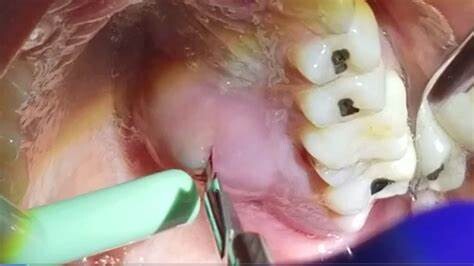
What are the Signs and Symptoms of a Tooth Infection?
Tooth infection symptoms usually include:
Throbbing pain in the affected tooth
Pain when you try to bite or chew on the tooth
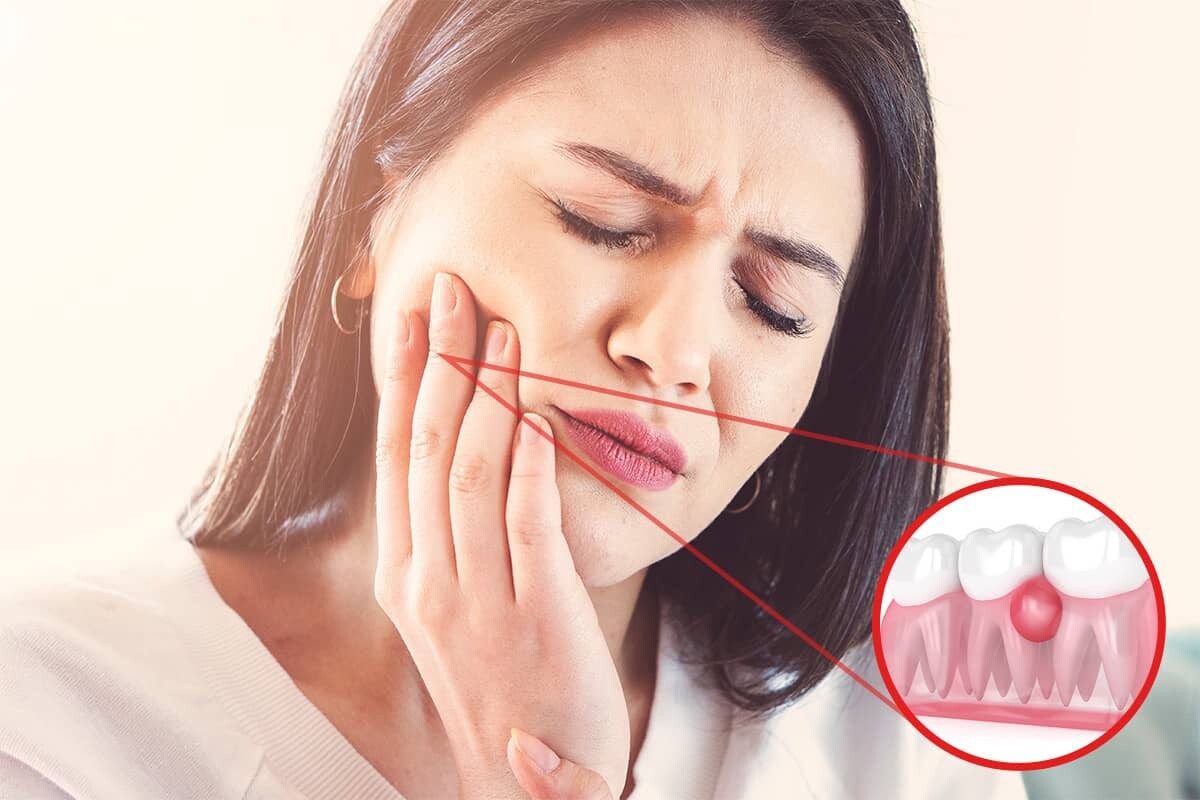
Increased sensitivity to hot and cold foods and drinks
Sometimes a tooth will initially feel painful, but the discomfort might disappear. This doesn’t mean the infection is gone. It could mean the tooth nerve has died, so the tooth no longer feels painful, but the infection is still present. A tooth infection will not clear up on its own; your immune system cannot fight the infection as it can’t send antibodies to the inner part of the tooth. Instead, the infection will continue to spread beyond the tooth and the tooth root. It can start to affect the area between the tooth and your jawbone and turn into a tooth abscess.
What is a Tooth Abscess?
You have a tooth abscess if an untreated tooth infection spreads beyond your tooth root, and there are two main types of dental abscesses. Periapical abscesses are formed right at the tip of a tooth root. Periodontal abscesses form in the bone right next to the affected tooth and may be present if you have gum disease. If you have advanced gum disease, your gums can pull away from your teeth, creating deep pockets, called periodontal pockets, where bacteria can thrive, eventually causing an abscess.
What are the Signs and Symptoms of a Tooth Abscess?
An abscessed tooth can cause pain, but this isn’t always the case. Other symptoms include:
Swollen gums around the affected tooth
Pain when chewing
A persistent bad taste
Bad breath
Jaw pain
A severely abscessed tooth can cause a pimple to form on the gum, that if you press it will ooze pus. A dental abscess can affect overall health, as the bacteria can spread to other parts of the body. Signs to be aware of include swollen lymph nodes, facial swelling, fever and a general sense of feeling unwell. A tooth abscess may also cause trouble breathing or swallowing and a headache.
If you are concerned you have a dental abscess and think the infection has spread, you must seek emergency medical care. In rare cases, a severe tooth infection can spread to the brain and may become life-threatening.
Although similar conditions cause tooth infections and dental abscesses, treatment isn’t always the same. If you do have a painful tooth, contact Tandara Dental Centre as soon as possible. Dental pain isn’t normal and indicates a problem with a tooth that needs professional care. The sooner we can see you, the greater the chance we can successfully treat a tooth infection and save the tooth. It is much harder to save abscessed teeth.
What About Using Home Remedies for a Tooth Infection?
We know it is easy to look online and discover all sorts of remedies for tooth infections. However, home remedies for a tooth infection will not eliminate the bacteria causing this problem. You will need professional dental care. The sooner you see a dentist, the more quickly we can get rid of discomfort and pain and prevent the infection from spreading.
Diagnosing a Tooth Infection
When you visit Tandara Dental Centre, we can gently examine the tooth and quickly diagnose the reason for tooth pain. Our dentist will most likely take a dental x-ray of the tooth, showing the extent of the infection. Once we have this information, we can decide the best way to treat the infection and hopefully save the tooth.
Treating a Tooth Infection
If the infection has not spread into the surrounding tissue and is confined to the central part of the tooth, our dentist may recommend root canal treatment.
What is Root Canal Treatment?
Also called endodontic treatment, root canal treatment removes the infected dental pulp and the tissues extending into the root canals in the tooth roots. It is an intricate process that takes several visits to complete. Your tooth will feel much more comfortable after your initial visit to get rid of the infected tissues in the tooth, but it could still feel a bit sensitive for a while until it settles down.
Once all the infected tissue is removed, the tooth is disinfected, and medication is placed in the tooth to eliminate any remaining bacteria. We will insert a temporary filling to allow the medication to work. After several weeks, our dentist will remove the temporary filling, clean the tooth again and insert more medication and another temporary filling. The tooth is left to settle down for another few weeks to make sure it is infection-free. The next stage is to seal the tooth permanently with a material called gutta-percha. Sometimes a post is inserted into the tooth for additional strength.
Because a severely infected tooth has almost certainly lost a substantial part of its structure, it is restored with a dental crown. The crown fits over the entire tooth, sealing and protecting it from further infection. The crown restores appearance and strength, so you will be able to eat and talk comfortably and confidently. Your root treated tooth is now ‘non-vital’ as the nerve is removed and, consequently, more brittle but could last for years or life.
Sometimes a tooth that has received root canal treatment can become re-infected. At this stage, we would need to assess the tooth very carefully. It might be possible to perform a second root canal treatment to remove the infection, but we will need to discuss the possible risks and benefits of this approach. Treatment could be quite involved and costly and may have a limited chance of success. If this is the case, we might suggest removing the tooth and looking at suitable ways to replace it, such as placing a dental implant that can provide a long-term solution.
Diagnosing a Tooth Abscess
If we discover your tooth infection has spread beyond the tooth and that you have a tooth abscess, we will still try very hard to save the tooth. When we take the x-ray of your tooth, we can see if the abscess is treatable and any chance of saving the tooth. It depends on how far the infection has spread beyond the tooth.
Treating a Tooth Abscess
You will almost certainly need antibiotics, and the abscess or pocket of pus on the gums might need to be lanced so it can be drained. When we can catch a tooth abscess soon enough, root canal treatment could save it. Unfortunately, if the infection is severe, the only solution may be to remove the tooth to help the infection drain adequately. Leaving the tooth in place could cause additional oral health problems, especially as the infection will have killed the tooth nerve, and there will be no blood flow to the tooth root to help fight the infection.
What About Wisdom Tooth Infections?
Your wisdom teeth usually come through during the late teens and early twenties and can cause problems if they cannot erupt properly and become impacted or stuck underneath the adjacent teeth. Often there is inadequate room for wisdom teeth, so they can cause problems with overcrowding, affecting the adjacent teeth. Some wisdom teeth will partially erupt, so they are tricky to keep clean and become decayed and infected more easily. An impacted and infected wisdom tooth can cause toothache and jaw pain and must be removed.
If your wisdom teeth have yet to make an appearance, we will monitor them closely, checking their position in your jaw using digital dental x-rays. We prefer to take a wait and see approach, but if it is obvious these teeth cannot erupt without causing problems, we will suggest removing them before you get a wisdom tooth infection due to an impacted tooth.
What to Expect if You Need a Tooth Removed?
Tooth extraction is usually a routine procedure, and if you do need this treatment, we will do everything we can to ensure you feel comfortable. If you need a straightforward tooth extraction, local anaesthetic is usually enough to numb the tooth so we can quickly remove it. You should not feel any pain as the tooth is taken out.
If tooth removal is more complicated, it may require a surgical extraction, for example, if a wisdom tooth is partially or completely hidden in the gum. In this case, we can provide additional sedation if needed, so you feel deeply relaxed or will fall asleep during treatment. The tooth is then removed by making a small opening in the gum and jawbone to expose it. The tooth might be sectioned or cut into smaller pieces before we remove it, so we only need to make a small incision that will heal more quickly and comfortably.
What to Expect After Tooth Extraction?
Healing after tooth extraction should be uneventful and comfortable, and we will provide lots of information on how to care for the surgery site. An infection after tooth extraction only occurs in a tiny percentage of cases. When it does happen, it is very treatable. It could be a condition called dry socket, where the blood clot protecting an empty tooth socket becomes dislodged, allowing the socket to become infected and increasingly painful. In this case, we can clean out the socket so it can heal more easily.
Can I Prevent a Tooth Infection and Tooth Abscess?
Practising good oral hygiene can reduce the risk of developing a tooth infection and gum disease. We much prefer this preventive approach rather than seeing patients in pain or discomfort that could have been avoided.
Preventive Dentistry
Preventive dentistry is not complicated or time-consuming and could save you from pain and avoid spending hours in our dental chair. It is also much more cost-effective.
Regular Professional Dental Care
When you visit a dentist for regular checkups and cleanings, any signs of problems, such as gum disease or small lesions in teeth, are detected and easily treated before they can develop into larger and more troublesome issues. When we can catch dental problems in their early stages, the risk of developing tooth infections and tooth abscesses declines.
Professionally cleaning your teeth removes all the plaque and tartar buildup from teeth, reducing tooth decay and gum disease risks. Dental education is another important factor. When we clean your teeth, we can easily identify areas that need a bit more attention when you brush and floss. Our dental team can discuss how to clean your teeth more effectively and, if needed, can demonstrate different techniques and tools to use.
Taking Care of Your Oral Health at Home
A good oral hygiene routine takes less than ten minutes each day and will help you enjoy optimal oral health between checkups. The routine is extremely straightforward, simply involving brushing your teeth twice a day for two minutes each time. You need the full two minutes to clean all tooth surfaces thoroughly. If you use an electric toothbrush, it will have a built-in timer, but if you prefer a manual brush, be sure to set the timer on your phone or keep a small timer in the bathroom for this purpose. It is very easy to underestimate two minutes! You must floss your teeth once a day because plaque bacteria and food debris can easily become trapped between your teeth, greatly increasing the risk of a tooth infection or gum disease. Flossing is easy once you know how to do it correctly, so be sure to ask us for help if you struggle with this task. We can show you some techniques or other tools to try.
Tooth infections and tooth abscesses are unpleasant and can cause tooth loss but are often preventable with the proper dental care. By working together, we can help you achieve and maintain your best level of oral health.
(11/06/2024)by Tandara Dental Centre
More Information: N
Views: 286

Seven Things You Could Do To “Regrow” Your Teeth
Dental specialists have built up a wide range of ways over the years to address and fix teeth that are decayed, degraded and inaccurately situated. The nerves might be expelled from dead teeth, and broken teeth are crowned or capped.
Sealants and fluoride are substances that help protect against the arrangement of cavities, or dental caries, in areas that are hard to reach and regularly missed by brushing.
Truly, there is a great deal that the dental specialist can do to keep your teeth looking and feeling better. Be that as it may, pretty much every treatment depends on bringing an outside substance into your mouth. It is possible to regrow teeth, yet new research shows that it might just be.
From methodologies to help the quality and strength of your teeth to the chance of regrowing an entire tooth, we’ll let you know the “tooth” improvements in oral wellbeing. Here are the means by which you could regrow harmed teeth.

1. Utilize Specialized Toothpaste
To begin with, some awful news. There is at present no real way to regrow dissolved enamel. Enamel is the substance that covers the outside of your teeth and it’s the hardest substance in the human body. In any case, it can likewise be eroded over time. Brushing and expending acidic nourishments are the two most normal reasons for enamel disintegration. When it’s gone, it’s gone.
Notwithstanding, you can remineralize the enamel you have left and along these lines shore up your teeth’s protective covering.
A few brands of toothpaste are intended to protect against corrosive disintegration and to fortify existing enamel. They do it by driving calcium and phosphates into your teeth, with help from old fashioned fluoride. Dietary corrosive hauls these reinforcing components out, yet fluoride can recover them from our salivation and step them again into teeth.

2. Eat Eggshells
Others forget about the extravagant toothpaste and depend on eating eggshells for remineralized enamel. Last we checked, eggshells weren’t generally viewed as eatable.
However, for reasons unknown, they have a comparable creation to teeth, including heaps of calcium. Numerous individuals report awesome outcomes subsequent to embracing a normal that incorporates eating, in any event, one eggshell daily.
You need to heat up your eggshells quickly to ensure they’re protected to eat, and afterwards dry them completely on a warm stove.
At long last, granulate them into an extremely fine powder to avoid getting cut by sharp edges. Sprinkle the powder on anything you think will assist you with getting it down.
3. Take Medications
Dental specialists are truly excited up about the chance of utilizing a drug to spike stem cells inside dental mash to develop more dentin, which is the hard tissue underneath your enamel.
A test called Tideglusib has an extremely senseless name yet a great deal of potential to do just that. At present in preliminaries for use with Alzheimer’s patients, the FDA could quick track the extra sign for dental use.
At present, when the dental specialist finds a depression, the individual in question penetrates out the rotted material and afterwards fills the entire with a substance called amalgam. It’s an adequate arrangement with the exception that the rounding can sometimes drop out, and the amalgam contains modest quantities of unsafe mercury.
While utilizing Tideglusib wouldn’t abstain from expecting to have the rotted part of your tooth penetrated, the tooth could then close the opening itself in a manner that is totally coordinated with the tooth, instead of stuck in.
4. Laser Technology
Researchers at the University of Buffalo in New York feel that lasers may likewise have the option to help regrow dentin. They found that sparkling a low-power laser light at residual mash may likewise invigorate stem cells to begin delivering dentin once more. Making sense of how to trigger stem cells is a gigantic shelter with numerous potential wellbeing applications.
When it comes to teeth, the laser method likely won’t take out the requirement for dead teeth to experience a root channel and be covered with a crown. Yet, the presence of new dentin strengthens the tooth that is left and may expand the life of the crown that is introduced.
Ordinarily, the weight of gnawing and biting food debilitates the paste that holds a crown set up, so it should be supplanted now and again.
5. Ultrasound Technology
Supports are the best quality level when it comes to making that entirely adjusted grin we as a whole need, yet they can really do a lot of harm to teeth as they work.
One issue is called dental root resorption, which includes a breakdown of the root structure. This confines the measure of time that supports can be worn. (Different reasons for root resorption are endocrine unsettling influences, injury, and unnecessary brightening treatment.)
Notwithstanding, a group of Canadian scientists has planned a low-force beat ultrasound system that dwells on a little chip that can be joined to an orthodontic section or plastic removable crown.
The ultrasound waves work to neutralize the resorptive procedure, taking into account longer utilization of supports or mending for people at risk of losing teeth to illness. A market-prepared LIPUS item is scheduled for 2020.
6. Use Biomaterial
Researchers from Kinki University in Japan have been dealing with a way to adjust hydroxyapatite, which is the biomaterial that makes up enamel, into a slight film that can be utilized as a characteristic enamel substitute.
The precarious part is that at present the material is just folded over the tooth can in any case be relaxed or drop out over time. Dental specialists are searching for an approach to conceivably saddle nanotechnology to develop hydroxyapatite gems legitimately outwardly of teeth.
7. Grow an Entire Tooth
This may be a definitive objective for science in the dental domain – to regrow an entire missing tooth. It has just been done in mice, yet what it would require to be done in people is overflowing with moral and legitimate issues. Essentially, the procedure includes the formation of a tooth primordium, which is a tooth in its most punctual phase of improvement. In the wake of being made in a lab, the primordium would then be embedded into the jaw where a missing tooth used to be.
The issue is that so as to make the primordium, researchers need to reap stem cells from human undeveloped organisms. Early-stage stem cells are the main ones that can make teeth; as grown-ups those cells are absent.
It’s against the law (also morally dim) to gather stem cells from undeveloped organisms, so advancement of this innovation will require a procedure that doesn’t include incipient organisms by any stretch of the imagination. Try not to hold your breath, however, have confidence that researchers are working on this issue at this very moment.
Conclusion
Used with varying levels of frequency, these 7 methods of dental care are nevertheless changing the way we think about our teeth.
Rather than just accepting that teeth in their natural form are not replaceable, researchers are delving into what makes this possible in other animals, like sharks and alligators, and looking to find a similar mechanism in humans. We have to say, we’re totally behind anything that makes our time at the dentist a little less miserable.
(11/07/2024)by Viralifes
More Information: https://viralifes.com/7-things-you-could-do-to-regrow-your-teeth/
Views: 535

